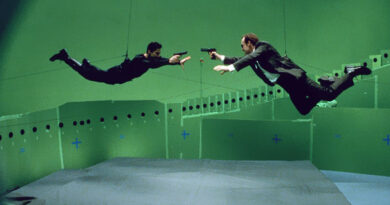Horror Genre Evolution: From Classic Monsters to Psychological Thrillers
Introduction
The horror genre in cinema has undergone a fascinating evolution over the years, transitioning from its origins in classic monsters and supernatural creatures to the more nuanced realm of psychological thrillers. This evolution reflects not only changing societal fears but also the advancements in filmmaking techniques and storytelling. In this article, we will explore how the horror genre has transformed from its early roots to the present day, focusing on the shift from iconic monsters to the exploration of human psychology.
Classic Monsters: The Birth of Horror
The horror genre can trace its roots back to the early 20th century with silent films like “Nosferatu” (1922) and “Frankenstein” (1931). These films introduced audiences to classic monsters like vampires, zombies, and mummies, tapping into primal fears and supernatural folklore. The horror in these films was often derived from the uncanny, the unknown, and the macabre.
Universal Pictures played a significant role in popularizing these classic monsters. The studio’s shared universe, known as the Universal Monsters, included iconic characters like Dracula, the Wolf Man, and the Mummy. These films created the foundation for the horror genre and laid the groundwork for the terror that would follow.
The Evolution: Psychological Thrillers Take Center Stage
As the decades progressed, filmmakers began to delve into the human psyche, ushering in a new era of horror that focused on psychological terror rather than physical monsters. Alfred Hitchcock’s “Psycho” (1960) is a pivotal film in this transition. The movie blurred the lines between reality and delusion, crafting fear from the depths of the human mind. This marked a turning point in horror, where audiences were now scared not by external creatures, but by their own thoughts and perceptions.
The 1970s and 1980s saw the rise of the slasher subgenre with films like “Halloween” (1978) and “Friday the 13th” (1980). These movies shifted the focus to human killers, often masked and driven by psychological motives. The terror came not only from the violence itself but also from the unpredictability of the killers and the vulnerability of the victims.
The 1990s brought a new wave of horror with movies like “The Sixth Sense” (1999), where supernatural elements intertwined with psychological exploration. This trend continued into the 2000s with films like “The Others” (2001) and “The Ring” (2002), which blended ghostly hauntings with intricate psychological narratives.
Modern Horror: A Fusion of Fear
In recent years, the horror genre has evolved into a blend of classic and psychological elements, often blurring the lines between the two. Films like “Get Out” (2017) and “Hereditary” (2018) have garnered critical acclaim by seamlessly integrating social commentary and psychological horror. These films tap into contemporary fears and societal anxieties, bridging the gap between traditional monsters and the complexities of the human mind.
Additionally, advancements in technology and filmmaking techniques have allowed for more immersive storytelling. The use of sound, visual effects, and innovative camera work creates an atmosphere of dread that can be just as effective as the monsters of yesteryears.
Conclusion
The evolution of the horror genre from classic monsters to psychological thrillers reflects not only changes in filmmaking techniques but also shifts in societal fears and the exploration of the human experience. While the classic monsters still hold a special place in the hearts of horror enthusiasts, the genre’s expansion into psychological realms has opened new avenues for storytelling and fear-inducing experiences. As we continue to evolve as a society, so too will the horror genre, adapting to our ever-changing fears and anxieties. Whether it’s a ghostly apparition or a descent into madness, the horror genre will persist in keeping us on the edge of our seats, reminding us of the thrill that fear can provide.




